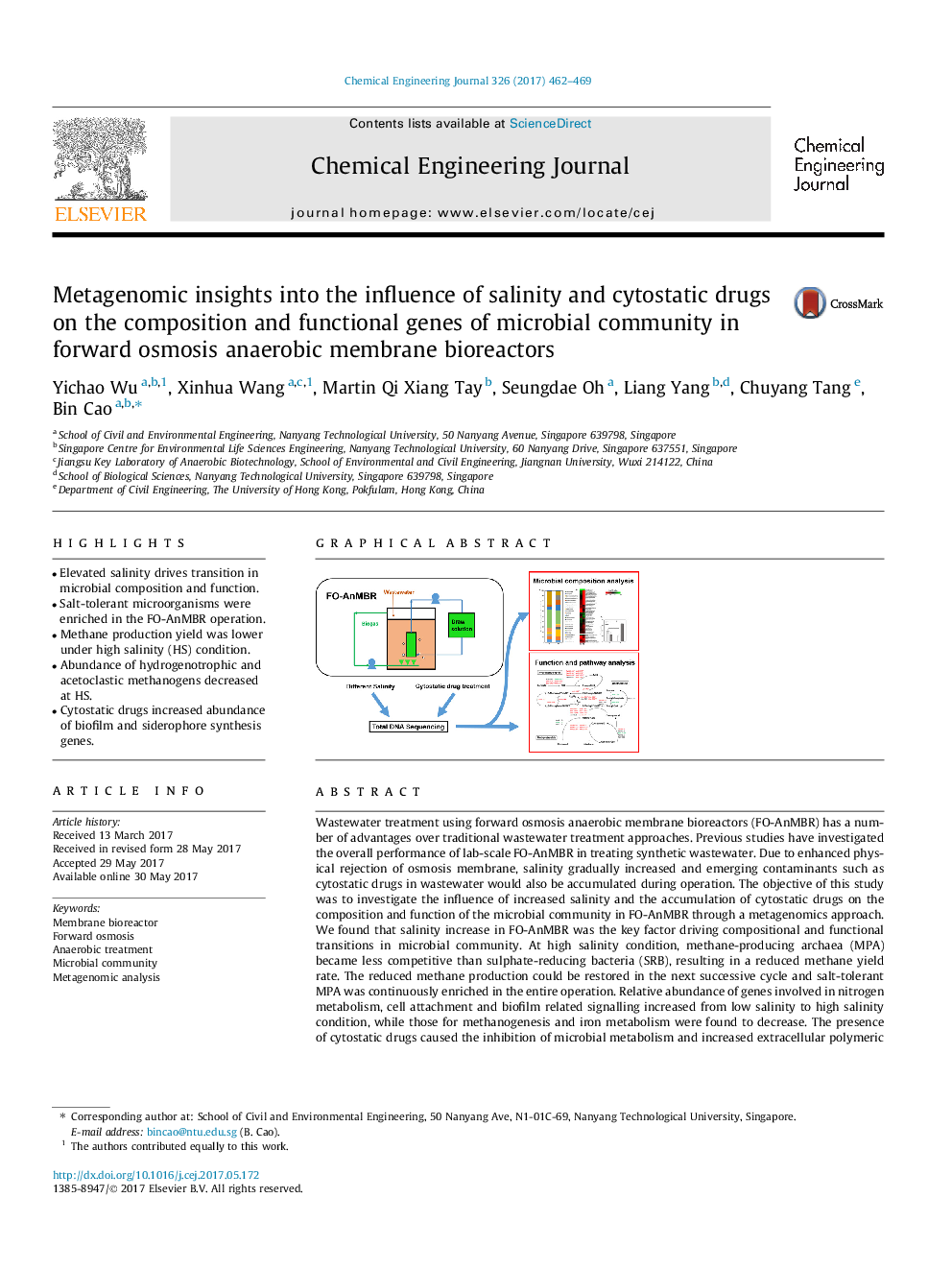| کد مقاله | کد نشریه | سال انتشار | مقاله انگلیسی | نسخه تمام متن |
|---|---|---|---|---|
| 6465474 | 1422952 | 2017 | 8 صفحه PDF | دانلود رایگان |
- Elevated salinity drives transition in microbial composition and function.
- Salt-tolerant microorganisms were enriched in the FO-AnMBR operation.
- Methane production yield was lower under high salinity (HS) condition.
- Abundance of hydrogenotrophic and acetoclastic methanogens decreased at HS.
- Cytostatic drugs increased abundance of biofilm and siderophore synthesis genes.
Wastewater treatment using forward osmosis anaerobic membrane bioreactors (FO-AnMBR) has a number of advantages over traditional wastewater treatment approaches. Previous studies have investigated the overall performance of lab-scale FO-AnMBR in treating synthetic wastewater. Due to enhanced physical rejection of osmosis membrane, salinity gradually increased and emerging contaminants such as cytostatic drugs in wastewater would also be accumulated during operation. The objective of this study was to investigate the influence of increased salinity and the accumulation of cytostatic drugs on the composition and function of the microbial community in FO-AnMBR through a metagenomics approach. We found that salinity increase in FO-AnMBR was the key factor driving compositional and functional transitions in microbial community. At high salinity condition, methane-producing archaea (MPA) became less competitive than sulphate-reducing bacteria (SRB), resulting in a reduced methane yield rate. The reduced methane production could be restored in the next successive cycle and salt-tolerant MPA was continuously enriched in the entire operation. Relative abundance of genes involved in nitrogen metabolism, cell attachment and biofilm related signalling increased from low salinity to high salinity condition, while those for methanogenesis and iron metabolism were found to decrease. The presence of cytostatic drugs caused the inhibition of microbial metabolism and increased extracellular polymeric substances (EPS) concentration. Due to their differential influences on community members, the evenness of community decreased after drug treatment. After the drug treatment, biofilm-forming and siderophore-producing bacteria were found to be more dominant in the microbial community.
174
Journal: Chemical Engineering Journal - Volume 326, 15 October 2017, Pages 462-469
